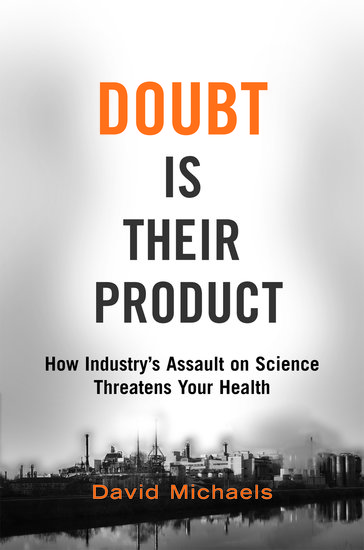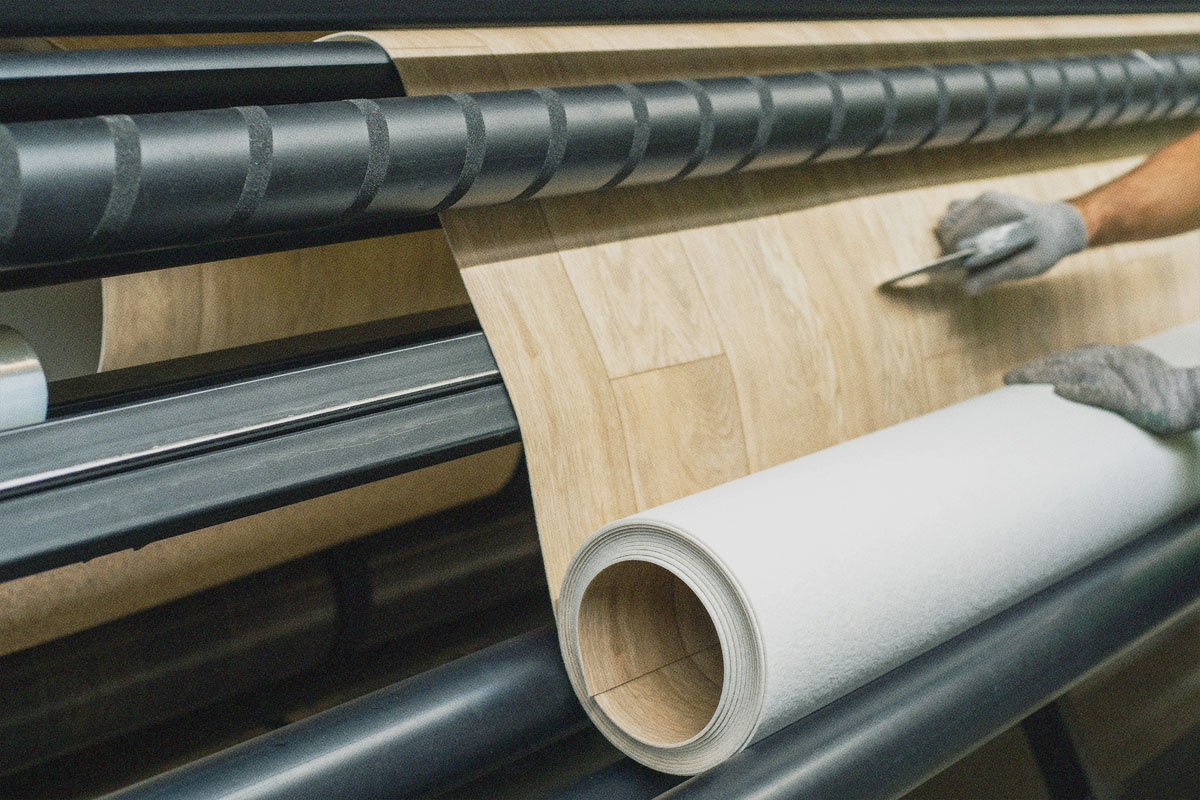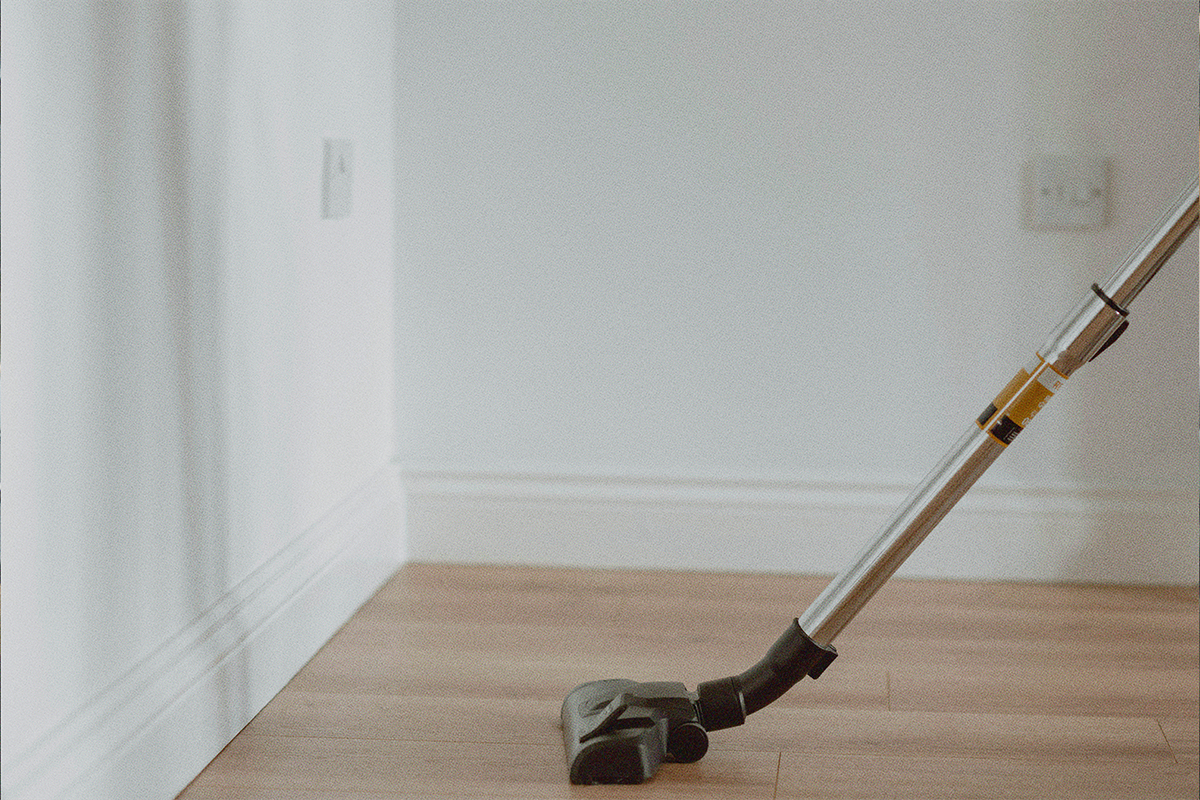 READ HABITABLE’S NEW REPORT
READ HABITABLE’S NEW REPORT
New HBN research reveals that legacy toxic hazards are being reintroduced into our homes, schools and offices in recycled vinyl content that is routinely added to floors and other building products. Legacy substances used in PVC products, like lead, cadmium, and phthalates, are turning up in new products through the use of cheap recycled content.
Funding for research on post-consumer PVC feedstock was provided by StopWaste and donors to the Healthy Building Network (HBN). It was conducted using an evaluative framework to optimize recycling developed by StopWaste, the San Francisco Department of the Environment, and HBN. This briefing paper on post-consumer recycled PVC is a prequel to a forthcoming white paper by this new collaboration.

This paper was prepared by Perkins+Will, in partnership with Healthy Building Network (HBN), as part of a larger effort to promote health in the built environment. Indoor environments commonly have higher levels of pollutants, and architects and designers may frequently have the opportunity to help reduce or mitigate exposures.
The purpose of this report is to present information on the environmental and health hazards of PVC, with an emphasis on information found in government sources. This report is not intended to be a comprehensive analysis of all aspects of the PVC lifecycle, or a comprehensive comparative analysis of polymer lifecycles. Rather, in light of recent claims that PVC formulas have been improved by reducing certain toxic additives, this paper reviews contemporary research and data to determine if hazards are still associated with the lifecycle of PVC. This research has been surveyed from a perspective consistent with the precautionary principle, which, as applied, means that where there is some evidence of environmental or human health impact of PVC that reasonable alternatives should be used where possible. Furthermore, and more generally, this paper is intended to build greater awareness of this common building material.
Home Depot, the world’s largest purchaser of building products, announced that by the end of 2015 it will eliminate phthalate plasticizers from the vinyl flooring it sells.
Phthalates are endocrine disrupting chemicals that have been banned in children’s products since 2008 but are still widely used in a wide range of vinyl products to make them flexible.
The announcement came after lengthy negotiations led by the Mind The Store Campaign, a grassroots effort supported by the Healthy Building Network’s (HBN) cutting-edge research on building products. Mind The Store is challenging the country’s largest retailers to restrict 100 hazardous chemicals in the products they sell. Also today, the Mind The Store campaign released a report identifying phthalates and other chemical hazards detected in vinyl flooring products.

HBN first addressed the issue of phthalate substitution in polyvinyl chloride (PVC or “vinyl”) flooring in our 2014 report, Phthalate-free Plasticizers in PVC. The HBN analysis was intended to help purchasers evaluate the claims of phthalate-free product lines in order to make informed choices about a wide array of materials including flooring, wall guards and coverings, wire and cabling, upholstery and membrane roofing. And it worked: the report helped to convince Home Depot that change was possible in short order. Now that Home Depot has acted, the whole industry will surely follow.
And what a relief it will be for people who live, work and play on vinyl floors. PVC sheet floors can contain over 20% phthalate plasticizers. These semi-volatile organic compounds readily migrate from flooring into dust and are inhaled by building occupants. Researchers are finding that exposures to phthalates occurs in the womb as well as after birth, and can impair the development of lungs and immune systems. This disruption in turn can lead to the development of asthma, as we first reported in 2004, and genital deformities in boys.
For over a decade now, leading green designers, architects and building owners have taken a precautionary approach, avoiding PVC building products in commercial buildings as evidence grew of the many toxic impacts associated with PVC and its additives. As a result, phthalate-free formulations of vinyl floor and wall coverings began appearing in this market a few years ago. Home Depot’s leadership marks a tipping point that will bring these products to everyone.

This Healthy Building Network (HBN) Research Brief examines replacements for phthalate plasticizers in Polyvinyl Chloride (PVC) building materials. Plasticizers are added to PVC to make it flexible, but since they are not tightly bound to the PVC molecules, they migrate from PVC products.
Phthalates, the most commonly used plasticizers in PVC, are known endocrine disruptors – chemicals that interfere with hormone signaling, which is especially critical to early childhood development. Additionally, many phthalates are known carcinogens and reproductive and developmental toxicants. Exposures to these toxic plasticizers from PVC products can occur throughout their lifecycle. Therefore, it is crucial that PVC products containing phthalate plasticizers be eliminated from the built environment.
Fourteen residents of McCullom Lake Village, Illinois (population 1,000) have brain cancer.
The incidence in the US population is 4 in 100,000.[1] This is the largest brain cancer cluster identified in a non-occupational setting. In epidemiological terms, the chance that this is a coincidence is something like your chance of winning the lottery. It’s far more likely that the 14 victims share some sort of common link. The evidence in this case points to the vinyl chloride in the groundwater flowing into their wells from a nearby factory that made vinyl food wrap.[2]
Aaron Freiwald is an attorney representing the cancer victims in a class action lawsuit against Rohm & Haas, which bought the suspect facility from the Morton Chemical Company in 1999. According to Freiwald, “By the time we are done with this case, the association between vinyl chloride and brain cancer is going to be much stronger. They are going to have to revise the way current textbooks discuss cancer risks associated with vinyl chloride.”
One critical factor in the case is the clear connection between the vinyl chloride and the cancers. It can be difficult to prove a specific chemical causes a specific cancer because so often people have multiple exposures to carcinogens. But, Lake McCollum is an isolated community. There are no other significant industrial sources of chemical contamination to which the 14 victims have been exposed. According to the International Agency for Research on Cancer (IARC), vinyl chloride is carcinogenic to humans and has been associated with brain cancer.

Improved methods of analyzing DNA allow scientists to compare cancer cells in ways not available in earlier cases – such as the case of vinyl chloride plant worker Dan Ross featured in the PBS documentary Trade Secrets, and HBO’s Blue Vinyl. This new DNA analysis shows that the damage to brain tissue among the Illinois victims is strikingly similar, and that this pattern is different from other types of brain cancers – further evidence of a common local cause.
Freiwald is most excited by what his investigation has uncovered about industry-sponsored studies of vinyl workers. These have been the backbone of the vinyl industry’s defense that there is at best a “weak statistical correlation” between vinyl chloride exposure and brain cancer. The industry studies have long been criticized for having diluted the surveyed worker population with employees unlikely to have been exposed to vinyl chloride. “Our questioning of industry experts under oath,” says Freiwald, “has brought to light evidence that is going to strike at the heart of the whole industry’s defense of vinyl chloride.”
In depositions taken as part of this case, Freiwald says that industry experts acknowledged that had just one more case of cancer been identified in the worker population that was studied, the conclusion would have changed from a “weak statistical correlation” at best to a “statistically significant” correlation.
The McCollum case reminds us that the many problems associated with chlorinated materials, such as PVC plastic, are likely under-estimated, masked by the limits of scientific investigations to date, and obscured by the intensive cigarette science campaigns of its manufacturers.
SOURCES
- According to Freiwald, the number of glioblastomas (the dominant brain cancer in this group) is 3-4 per 100,000. The number of oligodendrogliomas, the second and related type of brain cancer among the victims, is 0.3 cases per 100,000. The number for all “brain and CNS” cancers, which is a more inclusive group of diseases, is 7 in 100,000.
- The chemical alleged to have been released into the Lake McCollum’s groundwater is known as dichlroroethylene, or 1, 1-dce, which undergoes reductive dechlorination to vinyl chloride in groundwater and landfills.
In Doubt Is Their Product, Dr. David Michaels, a former Assistant Secretary of Energy for Environment, Safety and Health under President Clinton, exhaustively documents the rise of the “product defense industry” and its strategy of using scientific discipline to establish controversies (i.e., starting something that is intended to continue or be permanent[1]), rather than establish facts (i.e., investigating something to confirm its truth or validity[2]) as a means of frustrating efforts to address public health risks from asbestos, benzene, aspirin (Reye’s syndrome in children), global warming and, of course, vinyl.
“Doubt is our product,” wrote a Brown and Williamson[3] executive in 1969, three years after the iconic warning label first appeared on cigarette packs, “since it is the best means of competing with the ‘body of fact’ that exists in the minds of the general public. It is also the means of establishing a controversy.”[4]
Michaels concentrates his reporting on his considerable first-hand experiences where, he writes, “I had the opportunity to witness what is going on at close range.”[5] He bears witness for 256 pages and backs up his observations with an additional 119 pages of endnotes, many of these referencing original documents that can be accessed through his website, www.defendingscience.org.
One of his first-hand experiences involves polyvinyl chloride plastic, also known as PVC or vinyl. The story of the vinyl industry’s cover-up of rare cancers among its workers in the mid-1970’s has been well documented elsewhere[6], including the documentary Blue Vinyl and the PBS investigative report Trade Secrets. Michaels connects the dots, documenting how, in 1974, the same public relations firm that created the “selling doubt” strategy for the tobacco industry would “establish uncertainty” about the risks of vinyl chloride for the PVC industry. They’re still at it.
Doubt Is Their Product concludes with a chapter offering “a dozen ways to improve our regulatory system.” Many of these could be adapted by green building policy makers or by anyone interested in testing whether an industry stakeholder is interested in establishing the facts, or just establishing a perpetual controversy.[7]

SOURCES
- Encarta® World English Dictionary ©1999 Microsoft Corporation.
- Ibid.
- Brown & Williamson was an American tobacco company and subsidiary of the giant British American Tobacco, that produced several popular cigarette brands including: Kool, Lucky Strike, Pall Mall and Viceroy. It became infamous as the focus of investigations for chemically enhancing the addictiveness of cigarettes. Its former vice-president of research and development, Jeffrey Wigand, was the whistleblower in an investigation conducted by the highly respected CBS news program 60 Minutes, an event that was dramatized in the film The Insider. Wigand claimed that B&W had introduced chemicals such as ammonia into cigarettes to increase nicotine delivery and increase addictiveness. Brown & Williamson had its headquarters at Louisville, Kentucky until July 30, 2004, when the U.S. operations of Brown & Williamson merged with R.J. Reynolds, creating a new publicly traded parent company, Reynolds American Inc. Source: http://en.wikipedia.org/wiki/Brown_and_Williamson.
- Doubt Is Their Product, p. 11, footnote 43, document available at http://legacy.library.ucsf.edu/tid/nvs40f00.
- Doubt Is Their Product, Introduction, p. x.
- See, e.g. Deceit and Denial: The Deadly Politics of Industrial Pollution. Gerald Markowitz and David Rosner. University of California Press, 2002. See also Toxic Sludge is Good For You and Trust Us We’re Experts, both by John Stauber and Sheldon Rampton, and The Republican War on Science, by Chris Mooney.
- These include e.g., (#1) Require full disclosures of any and all sponsor involvement in scientific studies; (#3) Manufacturers must disclose what they know about the toxicity of their products; (#5) Hold real people accountable for the accuracy—and completeness – of statements of corporations and trade groups.
“To protect the health of our state’s children,” California Governor Arnold Schwarzenegger signed legislation on October 14, 2007 prohibiting the use of phthalates (pronounced “thall-eights”) in childcare products designed for babies and children under three years of age.
Phthalates are used as plasticizers to soften polyvinyl chloride plastic, also known as PVC or vinyl, including a wide range of building products such as vinyl flooring, wallcovering and upholstery.
Phthalate plasticizers are not chemically bound to PVC. They have been found to leach, migrate or evaporate into indoor air and atmosphere, foodstuff, IV solutions and other materials, etc. Consumer products containing phthalates can result in human exposure through direct contact and use, indirectly through leaching into other products, or general environmental contamination. Humans are exposed through ingestion, inhalation, and dermal exposure during their whole lifetime, starting in the womb. Phthalates come in many different formulas. Most haven’t been tested or examined at all for human health impacts. The Consumer Product Safety Commission has noted that one phthalate formula common to certain building materials — DINP [1] — is a mixture of up to 100 chemical variants, of which only five have been minimally studied [2]. Others have been found to pose a risk of serious negative health impacts at very low doses.
Phthalates have been shown to have negative effects on human health including interference with the natural functioning of the hormone system, and reproductive and genital defects. Phthalates may lower sperm count and are associated with the risk factors for testicular cancer, as well as early onset of puberty and premature birth.
In June 2005, HBN discussed recent research findings that the cumulative impact of different phthalates leads to an exponential increase in associated harm, and documented levels of phthalates found in humans at levels higher than levels shown to cause adverse health effects. A 2007 study concluded that the exposure of children to phthalates exceeds that in adults, warning, “Current human biomonitoring data prove that the tolerable intake of children is exceeded to a considerable degree, in some instances up to 20-fold” [3].
Phthalates have been found in high quantities in studies of household dust. Other studies have documented links between childhood asthma and phthalate exposure from vinyl flooring. Because phthalates are not a volatile organic compound (VOC), however, they are usually not accounted for by indoor air quality standards such as those used to certify green building materials.

California now joins the EU [4] in restricting the use of phthalates in the use of children’s products, and many other US states are expected to take up legislation similar to that signed by Governor Schwarzenegger [5].
Like the human carcinogens vinyl chloride and dioxin, phthalates are uniquely associated with PVC [6]. It is this triple threat from PVC that distinguishes it as the worst plastic for environmental health and green building. Regrettably, there are still few restrictions on the use of vinyl in green buildings.
SOURCES
- Diisononyl phthalate, a general use vinyl plasticizer. It is the primary plasticizer used in vinyl toys, though it finds many other applications such as garden hoses, shower curtains, vinyl flooring and wall covering. Source: http://www.phthalates.org/glossary.asp [link no longer available]
- “Aggregate Exposures to Phthalates in Humans,” Health Care Without Harm, July 2002. http://www.noharm.org/lib/downloads/pvc/Agg_Exposures_to_Phthalates.pdf, p.16, footnote 149 Heudorf et al., 2007. “Phthalates: Toxicology and exposure“. International Journal of Hygiene and Environmental Health. Article in Press.
- Heudorf et al., 2007. “Phthalates: Toxicology and exposure“. International Journal of Hygiene and Environmental Health. Article in Press.
- “Permanent EU ban on phthalates in toys and childcare articles is published” TDCTrade.com website, Feb 03, 2006, http://www.hktdc.com/info/mi/a/baeu/en/1X008GDB/1/Business-Alert-%E2%80%93-EU/Permanent-EU-ban-on-phthalates-in-toys-and-childcare-articles-is-published.htm
- “A nationwide toxic toy ban likely to follow state lead” SF Chronicle, October 16, 2007, http://www.sfgate.com/cgi-bin/article.cgi?file=/c/a/2007/10/16/MNT0SQDJV.DTL
- About 80 to 90% of phthalate production goes into PVC (Costner, Pat et al. 2005, “Sick of Dust: Chemicals in Common Products–A Needless Health Risk in Our Homes”, Safer Products Project, http://safer-products.org/downloads/Dust Report.pdf and the Phthalates Information Centre Europe http://www.phthalates.com
A week after the US Green Building Council’s (USGBC) Technical Science Advisory Committee determined that PVC was one of the most unhealthy building materials in part due to occupational exposures to vinyl chloride, the federal Chemical Safety Board (CSB) found that a massive release of vinyl chloride led to the explosion that killed 5 workers at a PVC factory in Illiopolis, Illinois on April 23, 2004.
The CSB Investigation Report is made all the more relevant to green building professionals in light of the USGBC’s finding that PVC flooring ranked absolute worst in both human health and environmental factors compared to the alternatives reviewed. The destroyed factory, owned by Formosa Plastics, had been a major supplier of vinyl resin for Armstrong floors.
The CSB is the industrial equivalent of the National Transportation Safety Board (NTSB), the agency that rushes investigators to the scene of plane crashes, train derailments and the like. [1] The CSB’s March 6, 2007 report found among other things that the cause of this accident, “inadvertently draining a reactor, is a serious hazard in the PVC manufacturing process.” [2] Indeed just 60 days before the fatal explosion, workers at the same facility accidentally released an undisclosed amount of vinyl chloride. The report also notes that 8,000 pounds of vinyl chloride were released by accident in June 2003 at the company’s Baton Rouge, LA facility. [3] A year after the explosion, in May 2005, another 2,500 pounds of vinyl chloride were accidentally released from the company’s Delaware City, DE location. [4] Each release was caused by the same problems which led to the catastrophe at the Illiopolis facility in April 2004. Other PVC factories owned by Formosa have also suffered catastrophic explosions in the recent past. [5]

The chemical at issue, vinyl chloride, is a human carcinogen whose total danger is believed by many to be underestimated by the EPA. A 2005 study in the peer reviewed journal American Health Perspectives found that the EPA employed discredited scientific practices at the behest of the chemical industry in order to lower estimates of vinyl chloride’s cancer potency by tenfold. [6]
The USGBC’s study of PVC found it “consistently among the worst materials for human health impacts” based upon exceedingly conservative estimates of impact. To understand how conservative, consider that its evaluation of PVC only accounted for exposures from normal operations to workers in the factory and neighbors at the fenceline. The health impacts of the extraordinary accidental releases from Formosa’s facilities described above — and the deadly explosions that can follow as at Illiopolis — are beyond the reach of tools like LCA and risk analysis.
This CSB report further underscores the significance of the USGBC’s decision to be guided by the Precautionary Principle in its evaluation of green building materials and to fully consider the impacts of manufacturing processes on production workers. It is the essence of precaution to avoid hazards and risks that are avoidable. So remember this the next time you specify pipe, roofing membranes, wall coverings and especially flooring: the chemical that killed those 5 men in Illiopolis is essential and unique to only one material you are considering: PVC plastic, also known as vinyl. [7]
SOURCES
- The CSB is an independent federal agency charged with investigating industrial chemical accidents. The agency’s board members are appointed by the president and confirmed by the Senate. CSB investigations look into all aspects of chemical accidents, including physical causes such as equipment failure as well as inadequacies in regulations, industry standards, and safety management systems. The Board does not issue citations or fines but does make safety recommendations to plants, industry organizations, labor groups, and regulatory agencies such as OSHA and EPA.
- US Chemical Safety and Hazard Investigation Board Investigation Report, Formosa Plastics Corp., Illiopolis, Illinois, April 23, 2004 p. 29. http://www.csb.gov/completed_investigations/docs/FormosaPlasticsIlliopolisReport.pdf
- Ibid. p. 28
- Ibid. p. 29
- http://abclocal.go.com/wpvi/story?section=nation_world&id=3514274 [link no longer available]
- Jennifer Beth Sass, Barry Castleman and David Wallinga. “Vinyl Chloride: A Case Study of Data Suppression and Misrepresentation,” Environmental Health Perspectives, published online 24 March 2005, doi:10.1289/ehp.7716, http://www.ehponline.org/members/2005/7716/7716.html
- To be sure, vinyl chloride is not the only avoidable risk in the production of flooring, or plastics, or materials generally. However, the risk of explosion is only one of the negative environmental health consequences of vinyl chloride whose use is both essential and unique to PVC plastic. Related impacts include dioxin emissions from manufacture and fire, the use and release of toxic additives such as cadmium and lead stabilizers and phthalate softeners, and the threats associated with the production of massive quantities of chlorine gas as the basic building block of vinyl chloride production. These factors lead HBN to the conclusion that PVC is the worst plastic for the environment.
Chemicals From Common Products Create “Toxic Cocktail” in Homes
Toxic chemicals common to home furnishings and electronic equipment have been found in household dust, including chemicals internationally recognized as harmful or toxic to the immune and reproductive systems; babies and young children are particularly at risk from exposure. That is the finding of a 2005 report, Sick of Dust: Chemicals in Common Products, which investigated six classes of chemicals in dust samples taken from 70 homes in seven states across the U.S. Among the chemicals documented in household dust are two — phthalate plasticizers and organotin stabilizers — that are ubiquitous in PVC vinyl building materials.
of phthalates manufactured are used in PVC products, and have been documented as leaching from shower curtains and flooring.
Animal studies have found phthalates disrupt reproductive systems, particularly in male offspring, and can contribute to male infertility. Phthalates have also been linked to asthma and respiratory problems in children.

Organotins, which are found in PVC water pipes, PVC food packaging materials, and many other consumer products, are poisonous in even small amounts, and can disrupt the hormone, reproductive, and immune systems.
In addition to the two chemicals commonly associated with PVC building materials, the report also found high concentrations of brominated flame retardants, which are incorporated into many plastics, including PVC, and electrical goods. Studies have revealed the breast milk of American women has 10 to 100 times higher concentration of PBDE, a type of flame retardant, than European women. According to Sick of Dust, a recent study indicates that levels of PBDE in Swedish breast milk began to decrease in 1997, possibly due to a voluntary phase-out of penta-DBE.
These findings add to the momentum of an anti-PVC movement which, according to a feature article in the Christian Science Monitor, is “picking up steam,” and provide additional ammunition for the many commenters who took aim at the USGBC’s draft PVC report that found “PVC does not emerge as a clear winner or loser.”
The Sick of Dust report ranks brand name companies and retailers on their use of hazardous chemicals, and provides an outline of fundamental changes needed to bring American chemical regulation up to a level that will protect basic health today and in future generations. But the easiest way to eliminate phthalates and organotins from household dust is to eliminate PVC from the household.
To breathe, I have to take way too many medicines today – each with their side effects.
I’m an adult. Imagine a child having to wade through all the symptoms and medicines associated with asthma.
Many factors contribute to the development and aggravation of asthma. However, I am wondering whether the installation of PVC flooring in my bathroom and kitchen contributed to the worsening of my breathing.
The floor was laid three years ago. A slow leak under my sink went unnoticed until the downstairs’ neighbor’s ceiling fell. About this time, my life-long respiratory ailments worsened.
Scientists are investigating the relationship between moisture, PVC flooring, and asthma.
In Sweden, a study of 10,851 children found the presence of both floor moisture and PVC significantly increased the risk of asthma.[1] The incidences were higher in multiple family dwellings where a higher percentage of PVC flooring was found.
Many workers in an office building in Finland, over a short period of time, were diagnosed with adult-onset asthma at a rate of about 16 times higher than expected.[2] An investigation uncovered in the office air space high levels of volatile chemicals, such as 2-ethyl-l-hexanol, l-butanol, which are degradation by-products of vinyl. The problem was traced back to damp concrete surfaces below the PVC flooring.
The PVC flooring was removed and surface of the concrete slab warmed up enough to remove the volatiles that had been diffused within. In rooms cleaned up in this manner and floors replaced with ceramic tile, the emissions of the three main volatiles (2-ethyl-l-hexanol, l-butanol, and 3-heptanone) decreased, as did employees’ symptoms and many asthma patients’ needs for medication.

Furthermore, studies have linked dust containing phthalates from homes with PVC flooring with an increase in asthma.
To make it less brittle, PVC is coated with plasticizers called phthalates. These chemicals evaporate and enter the air space where they adhere to dust particles.[3] New research shows that dust from homes containing PVC floors has higher levels of phthalates – particularly di(2-ethylhexyl) (DEHP) – than dust from homes without vinyl floors. One recent case-control study found an association between dust concentrations of phthalates inside homes and asthma, rhinitis and eczema.[4] The presence of PVC flooring in the child’s bedroom was the strongest predictor of respiratory ailments.
Other studies reach similar conclusions,[5] with one recommending “avoidance of PVC flooring in homes with small children” as a simple first step.[6]
Avoiding PVC flooring isn’t difficult, but it’s often disregarded as a cost-cutting measure.
Meanwhile, the costs associated with the increase in rates of asthma keep adding up. According to officials in my home state of Massachusetts, asthma is the number one preventable cost to hospitals.[7]
Prescription costs, doctors’ fees, lost wages due to time off from work for parents of asthmatic children, and the un-quantifiable cost of school absenteeism add up to a hefty burden for families and society.
Alternatives to PVC that are easier on the lungs exist today.
By switching to safer products we could be offering a child the priceless gift of easy breathing.
Guest columnist Niaz Dorry is a veteran activist and writer living in Gloucester, Massachusetts. She works with small-scale, traditional, and indigenous fishing communities in the U.S. and from around the globe to advance the rights and ecological benefits of the small-scale fishing communities as a means of protecting global protect marine biodiversity. In 1998, Time Magazine named Niaz as a Hero For The Planet for this work. Her fisheries articles appear regularly in a range of publications.
SOURCES
- Bornehag, C.G., Sundell , J., Hägerhed , L., Janson, S., and the DBH-study group, “Dampness In Buildings And Health. Dampness At Home As A Risk Factor For Symptoms among 10 851 Swedish Children” (DBH-STEP 1) (2002), SP Swedish National Testing and Research Institute and the International Centre for Indoor Environment and Energy, Technical University of Denmark Karlstad University, Sweden.
- Tuomainen, A., Seuri, M., Sieppi, A. “Indoor Air Quality And Health Problems Associated With Damp Floor Coverings In An Office Building” (2002), Kuopio Regional Institute of Occupational Health, Department of Occupational Hygiene and Toxicology, Kuopio, Finland; Kuopio Regional Institute of Occupational Health, Department of Occupational Medicine, Kuopio, Finland; and, Medivire Occupational Health Center, Kuopio, Finland.
- Katherine M. Shea, MD, MPH, and the Committee on Environmental Health; “Pediatric Exposure and Potential Toxicity of Phthalate Plasticizers.” Technical Report. American Academy of Pediatrics. PEDIATRICS Vol. 111 No. 6 June 2003.
- Carl-Gustaf Bornehag, Jan Sundell, Charles J. Weschler, Torben Sigsgaard, Björn Lundgren, Mikael Hasselgren, Linda Hägerhed-Engman, “The Association Between Asthma and Allergic Symptoms in Children and Phthalates in House Dust: a Nested Case-Control Study, Environmental Health Perspectives, July 15, 2004 (The National Institute of Environmental Health Sciences, National Institutes of Health, U.S. Department of Health and Human Services).
- Ruthann Rudel and Julia G. Brody, Silent Spring Institute, Newton MA; David Camann, Southwest Research Institute, San Antonio, TX; John Spengler, Harvard School of Public Health, Boston, MA; Leo Korn, UMDNJ, New Brunswick, NJ, “Phthalates, Alkylphenol, Pesticides, Polybrominated Diphenyl Ethers, and Other Endocrine Disrupting Compounds in Indoor Air and Dust,” Environmental Science & Technology, September 13, 2003.
- Haumann , T. and Thumulla, J., “Semi Volatile Organochemicals In Indoor Environment – Chlorinated Phosphorus And Organotin Compounds In Material Und House Dust Samples” (2002) Umweltanalytik und Baubiologie, Essen, Germany. AnBUS e.V., Fürth, Germany.
- Remarks of Massachusetts Division of Health Care Finance Policy official at the Massachusetts Department of Public Health’s conference on asthma, March 23, 2002.

 Health
Health Equity
Equity Pollution
Pollution